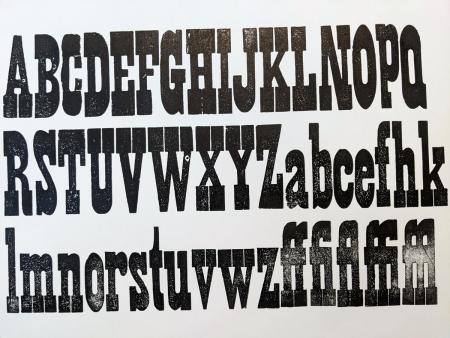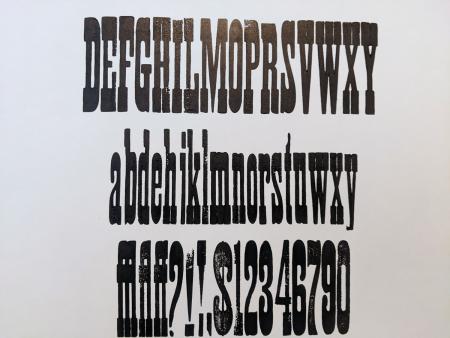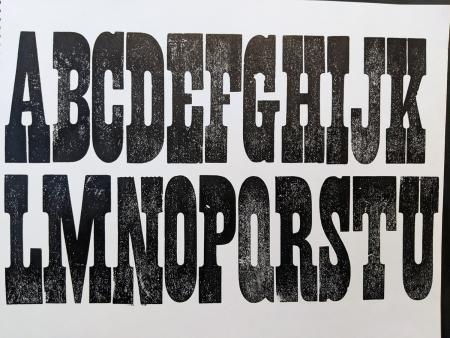Help with Wood Type ID
I am fairly new with letterpress. I bought a lot of 3000 wood type pieces and have been sorting for weeks. I am now trying to ID the sets that I have. Of the photos that are attached, The first one I am not sure of, but the other two I think I have but just would like a confirmation from others more knowledgeable than myself. The closest match I can find from the first one was Ten Line No. 158 (actual 14 line), the second was French Antique (actual 12 line) William Page, the third was French Clarendon (actual 24 line) Vanderburgh & Wells.
I appreciate any help. Thank you.

01TenLineNo158.jpg

02FrenchAntique12LineWilliamPage.jpg

03FrenchClarendon24LineVanderburgh.jpg
Duplicate post
The first and second are both Antique, just different levels of condensed. They both have square/slab serifs. As I thumbed through specimens I think the first is closed to Antique Condensed, the second looks like classic French Antique. The third has bracketed serifs - which is the hallmark of the French Clarendon.
Do they have makers marks? Or are you guessing at the maker based on font ID?
Here’s the relevant pages of the Page specimen for reference.
https://photos.app.goo.gl/YeAo5cDhEanimYNH8
https://photos.app.goo.gl/3VnciQgWQZUZ3DQC6
https://photos.app.goo.gl/edgjYfb5DeswtyXd7
P.S. in your first photo - the “P” is an upside down “d” and your N is upside down.
Mike
The second and third have maker marks. The first one I forgot to inspect when I printed it. Can’t get back to the studios until next week. Thank you.
It does make it easier when you have a makers mark. Only Page and Vanderburgh, Wells & Co / Heber Wells seemed to use names for fonts instead of numbers.
Another trick you can sometimes use when sorting is to look at the bottom surface of the type - each manufacturer has a different look and since you have some marked type you have a reference point.
P.S. I edited the prior post to provide more info.
Mike
Thanks Mike. As I was trying to identify, I noticed the P was wrong. Found a few other mistakes in some prints I made for other sets. As I said, I am a newbie. These are actually my first attempts at printing on any wood type. So much fun!
Also Mike,
The more I look, the first set looks exactly like the Ten Line No. 158 on page 140 of the Page Wood Type Book. The toughest thing for me is basing it only on a few letters.
I agree. After looking at page 140, it definitely matches No. 158. The O is the defining difference with the more rounded top and bottom from other Antique specimens. But from a practical perspective, since it’s unmarked, you don’t know which it is. It’s also very similar to Hamilton No. 180 (page 38 of the 17ty edition). For that reason I’d still describe it as a condensed Antique / French Antique style.
I’m any case, even though you’re new it, I’d say you’re on the right track both for printing and identification.
Mike
I agree. After looking at page 140, it definitely matches No. 158. The O is the defining difference with the more rounded top and bottom from other Antique specimens. But from a practical perspective, since it’s unmarked, you don’t know which it is. It’s also very similar to Hamilton No. 180 (page 38 of the 17th edition). For that reason I’d still describe it as a condensed Antique / French Antique style rather than rely just on the number.
I’m any case, even though you’re new at it, I’d say you’re on the right track both for printing and identification.
Mike
Thank you!! I have been individually identifying animals since 1988 so this is actually easier. It doesn’t move.